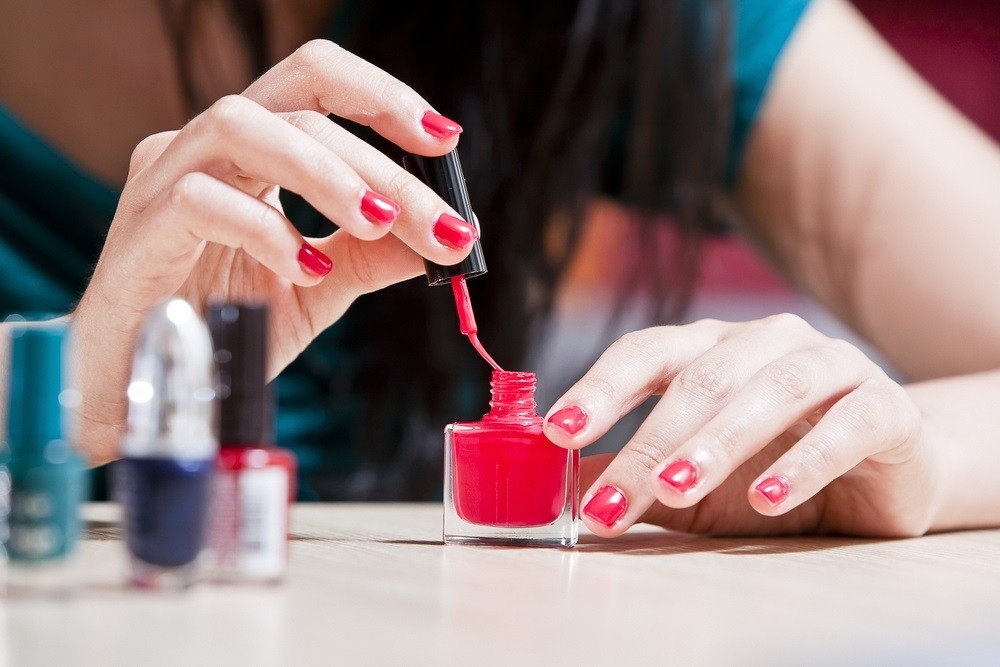Contents
- To whose credit is the creation of nail polish?
- The components of nail polish
- Is nail polish harmful?
- What, then, are these nail polish chemicals?
- Nail ridge removal methods
- Toluene
- Tosylamide or epoxy resin
- Lead
- Xylene
- How flammable is nail polish?
- Does nail polish chip easily?
- Is it safe for children to use nail polish?

Manicurists aside, everyone adores a pretty manicure. Nail polish has been around for a long time, and it has several uses ranging from a fun activity at sleepovers to a method to unwind on the weekend. One can experiment with a wide range of styles, from modern and sleek to classic and formal. In fact, nail polish has an essential function in the worlds of style and commerce. The added bonus is that it boosts our confidence. Please visit Maby blog to update the latest nail news.
The essence of nail paint is a vibrant method to adorn oneself. However, you could be curious about the history of nail polish. When and why was it first used? Many people are intrigued by the answers to questions they have never even considered about nail polish. Here are six FAQs (and one not-so-FAQ) about nail polish:
To whose credit is the creation of nail polish?
Men have been applying nail lacquer on their nails before battle for a long time. Manicuring and painting nails was a pre-battle ritual for Babylonian soldiers as early as 3200 B.C. Their hair was also curled and lacquered.
It was first used to denote a person’s dynasty and social status in China and Ancient Egypt around 3000 B.C. It was common for members of ruling dynasties to sport vivid, bold nail colors, whereas members of the lower classes were required to wear more subdued shades or were forbidden to do so altogether. A person’s life could be taken away for disobeying this law.
It was speculated that ancient Chinese women utilized nail paint. Ancient China Skip ahead to the present day. The first nail salon ever opened its doors in New York City in 1878. In addition, clear nail polish was made available to the public in the early 1900s, likely inspired by the new look of automobiles and their paint. Then, in 1932, Revlon made history by becoming the first major manufacturer of nail polish.
The components of nail polish
In order to do its job, nail polish relies on a wide range of compounds. Each component plays a vital role in making the polish peel- and chip-proof.
Nail polish typically has a chemical solvent as its initial ingredient. Solvents are liquids that can be used to dissolve or dissolve other substances. After the nail polish has been applied, the solvents evaporate. The following are some common solvents:
Toluene is a hydrocarbon that is both a liquid and a gas at room temperature.
The colorless, flammable liquid ethyl acetate. Its fruity aroma makes it a popular ingredient in fragrances and flavorings.
Butyl acetate is a whitish liquid and an organic molecule known as an ester. At room temperature, it has the potential to catch fire.
Tissue processing, staining, and cover sliding all make use of xylene, an aromatic hydrocarbon.
The preservative formalin is a colorless solution of formaldehyde in water.
Formaldehyde is an odorous, colorless chemical that is utilized in the manufacturing of numerous commonplace items and structural components. Extreme flammability is possible.
Isopropanol, or isopropyl alcohol, is a liquid alcohol that is a key component in the manufacture of acetone.
Nail polish often only contains low concentrations of potentially harmful chemicals like those listed.
To keep the layers of lacquer on one’s nails in place, an adhesive called a “resin” is used. The resin gives the material its desired hardness, depth, and glossy sheen.
The film formers in the nail polish are responsible for its luxurious feel. Nitrocellulose is a typical film forming found in nail polish. When cellulose is mixed with strong nitric acid, a highly combustible substance known as nitrocellulose is produced.
Nitrocellulose is dissolved in acetate to make a simple, clear nail polish; once the solvent has evaporated, a shiny coating is left behind. In addition, please refer to: The nail polish that rocked NYFW 2023, loved by top supermodels.
Is nail polish harmful?
Have you ever wondered what causes the odor that permeates most nail salons the moment you enter?
Manufacturers of nail paint, like manufacturers of most modern items, are not obligated to disclose the substances they use. This is why most people have no idea what they are putting on their bodies.
When you paint your nails, you inhale the odor of the polish itself, as well as that of any top coats, treatments, or removers you may have used. Nail polish contains chemicals, some of which may be hazardous, and your skin and nails absorb them all.
What, then, are these nail polish chemicals?
Nail Polish Containing Toxic Chemicals Dibutyl phthalate (DnBP)
Phthalates, a type of endocrine disruptor, have been linked to a variety of health issues, including diabetes, thyroid disorders, and hormonal shifts.
Nail ridge removal methods
Formaldehyde
This substance is recognized as a carcinogen.
Toluene
It has been associated with a wide variety of adverse consequences, from irritation of the eyes to damage to the central nervous system and kidneys.
Camphor is a chemical to watch out for in nail polish.
This can bring confusion and fits. Have you seen the yellowing of your nails as a result of the polish? Camphor, by removing their vital oils, causes this.
Tosylamide or epoxy resin
Despite its low-risk rating, some non-toxic nail polish manufacturers claim that their products include an antibiotic that promotes antibiotic resistance.
Polyvinyl formaldehyde
It’s a formaldehyde derivative that, when applied to the skin in large enough quantities, can cause an allergic reaction.
Eye and skin irritation have been linked to hydroquinone monomethyl ether (MEHQ or HQ).
Lead
Lead exposure is linked to numerous adverse health effects, ranging from kidney and brain damage to disturbances in the HPA axis.
Allergies, pulmonary damage, and even neurotoxicity have been linked to the preservatives methylchloroisothiazolinone (CMIT) and methylisothiazolinone (MIT).
Parabens
Parabens are widely used preservatives, but they also disturb hormone balance because they act like estrogen in the body.
The endocrine disruptor triphenyl phosphate (TPHP) has a wide range of effects, including on growth and reproduction.
Xylene
This can lead to skin, eye, and respiratory system discomfort. When breathed, it quickly enters the bloodstream and may even cause cancer.
A large body of research suggests that low levels of exposure to these substances are not the reason for alarm. But what about those who feel compelled to paint their nails monthly, if not more frequently? What about nail professionals who spend the majority of their time in direct touch with harmful chemicals?
Whether you’re a fan of professional nude tones or prefer glittery hues to express your individuality, it’s important to be aware of the ingredients in the products you buy and use. It’s especially important for those who spend their days physically touching these products.
Regrettably, it necessitates radical new policies. Knowing the potential toxins in nail paint, however, can help you make safer choices for yourself and your loved ones, as well as encourage grassroots change by voicing the need to make the required adjustments to ensure the safety of those who work in nail salons.
How flammable is nail polish?
The quick response is “yes.”
The high concentration of acetone in most brands of nail polish makes them highly combustible. If the correct amount of heat is applied, the ingredients in this bright finger paint will quickly catch fire.
A woman was burned when she carelessly placed a candle next to a bottle of nail polish, as reported by ABC News. The woman received third-degree burns when the nail paint caught fire.
Nail polish is not just flammable but also potentially harmful and should be handled with care. The vapors are so potent that they can cause dizziness, nausea, and migraines if used in a closed space.
It is highly toxic when taken and can cause unconsciousness if it is consumed at once.
Does nail polish chip easily?
The shelf life of nail polish is not indefinite. Nail polish can stay forever if it has never been opened, but if you do, the contents will evaporate after around two years.
Cracking and discoloration in old nail polish.
Is it safe for children to use nail polish?
Putting nail paint on youngsters is not recommended for the various reasons given above. The possibility that the kid will eat it after touching his or her face or putting his or her hands in his or her mouth. Nail polish remover containing acetone should also be avoided around children.
You may get nail paints made specifically for children that are all-natural and non-toxic. This nail polish is suitable for children to use because it is water-based rather than chemical-based; nonetheless, it may wash off quickly.
